
They looked at what it means, how to encourage it, what stifles it and what qualities do innovative companies share. In this article, those leaders, from a wide range of backgrounds, share their insights on those topics and more.
What we’re here for today is to talk about innovation, so I guess a natural place to start is: what does innovation mean?
David May Staying in business this week. [Laughter]
That’s perhaps an important point, although innovation is not just about applications or technology, it can be about how you actually run a business too?
David May I think it is the way things are in the industry at the moment. There’s huge change, massive overcapacity. And I think the challenge is to be innovative to reposition yourself for whatever comes out of the other side.
But what does that mean?
David May I think understanding what your customers want and being in a position to provide it. Looking at where your strengths and weaknesses lie, and who you are actually going to work for. Fenton and I were talking about this earlier; that there’s parts of printing, which is a skill, that have become radically deskilled. So, you know, the business has changed a lot. It’s a constantly moving thing and you need to stay on top of it, and you need to look forward and make sure you’ve got the right equipment or the right business strategy to use the equipment that you’ve got.
Martin Ruda I think innovation works on different levels. It’s interesting that one of the earliest points that came out was the way that the perspective of a business as a whole needs to be innovative just to survive, particularly in some of the environments in which we all operate. But I think there’s absolutely a strategic innovation perspective for any business to ensure that they’re here in 20 years and 50 years’ time. And then there’s product innovation, and there’s process innovation, and there’s manufacturing and equipment innovation, so I think it’s across multiple levels. But I think there’s a common thread, which is something to do with culture and philosophy, and the way people work and talk to each other and have things handed on from one to the other. Because I’m not sure that any of those levels of innovation work unless everybody “gets it”.
Alistair Ezzy I agree. The only reason I’ve stayed in direct mail is because we do different stuff. I had four or five years where we were focusing on letters and envelopes, and it can really be quite boring. At Lettershop, it’s creating a mail piece that no one else can really do and asking the customer what they think is responsive, working out what’s responsive with them, and then creating something that delivers for the customer. I agree with Martin that innovation comes down from the top. Simon [Cooper, managing director] and I run an innovation hour every fortnight where the shop floor, commercial, sales guys all turn up and we talk about what’s going on in the market and what our suppliers have brought to the party. So, I agree it’s definitely a cultural thing. Then the ideas come from up, down, and in from the side. The next step is the innovation of getting it to market. You might think you’ve got the greatest idea, but then get to market and find you’re twice the price. Then the next thing is, can you process it to make it the right price, or do you just walk away.
Paul Hewitt The important part of that is the fact that we can all have the same machinery, but it’s about the people, about the team, whether it’s the customer or the staff, and being responsive to finding solutions.
Alistair Ezzy We’ve probably all been in a meeting where someone’s come up with a problem and we’ve thought ‘Oh God, another problem, can you just give me an order’. But you really have to take the attitude of ‘brilliant, they have a problem’. Some days it’s pretty hard, like when it’s five o’clock, it’s the last call of the day and you know you’ve missed your train and you have to think ‘I really want to listen to your problem’. But that’s what separates the people who are willing to go that extra mile.
But then how do you create that culture?
Martin Ruda It’s not something you can tell people to do. Culture is the hardest thing to develop and manage. It evolves rather than being established as a template. But how you recruit, empower, support and encourage people certainly has an impact. One challenge is getting people to open up in groups and share their ideas. I think the innovation hour is a nice idea – I’ve written that down.
Alistair Ezzy That’s free. [Laughter]
Alistair Ezzy And you can rotate people around, change the groups, if you get people thinking it’s good. Sometimes we have four people, sometimes it’s 12, sometimes we bring suppliers in. It’s about harnessing their ideas.
Fenton Smith There’s the saying innovate or die. And we’ve all been in the industry a fair few years and I bet we could all probably name 20 companies that have gone in the last five or 10 years. I think it’s part of being in the printing industry because there’s so many different facets to it. So, you could be in a certain marketplace and a new bit of equipment comes along, a game-changer, and your product’s not quite right for the market anymore. The influence of the internet on society, stuff like that. So, you’ve got to continue evolving all the time. What makes it more challenging is the scale of the investments we have to make – if we get it wrong, the repercussions can be huge. I think anyone in print is innovative, but we’re just so used to it, we don’t even realise.
Alistair Ezzy And one of the things is to look at what you actually have. And innovate from what you have, don’t automatically look at what you haven’t got. Sweat what you’ve got. Being at the bleeding edge is no joke.
And the danger is that once you get to a position where you’re looking for a silver bullet to save the business, it’s kind of too late?
Rob Cross Going back a step though, where we sit on the innovation. We would be less product [innovation] focused and be more about listening to what our customers want from us, and then us looking at the mass market
processes and how we can produce it as efficiently as possible, getting it through the factory as quickly as possible with the lowest number of touch points. Looking at things like customer service too.
Paul Manning We quickly jump on products in the discussion, but you’re right, it has to be service as well. We try to do both. In this Amazon age, where people want to track everything, that’s something we’re looking at. And when it comes to staff, we haven’t really got a formal approach like Alistair, but we just talk a lot in the office. Probably because we’ve got the luxury of not being so big. But sometimes, good ideas come out of that kind of approach. It’s also about avoiding a culture of fear, though, because some people are really scared of making mistakes and they don’t put forward an idea because of that.
Paul Hewitt Well, if you’re not making mistakes, you’re not innovating.
Alistair Ezzy I would say ours are not very structured meetings [laughs]. But one of the things we do that is useful is put out everything we did last week. Because everyone knows what they’re doing, but not necessarily jobs that other
people have done.
Paul Manning We had that problem, so we put together a shared photo album. It’s quite a good customer resource, not a public customer resource though, as there’s stuff on there you wouldn’t want to show people. [Everyone laughs].
Paul Manning Not that kind of photo [laughs].
Peter Jolly You said that you make sure that staff know they will be forgiven if they make mistakes – does that extend to suppliers too?
Paul Manning No [laughs].
Peter Jolly Good to know. I just want to make a point though; you share best practice among individuals here and in your businesses. But we see maybe 500 customers every year and we see the general themes. And getting back to Darryl’s point earlier, I think it’s clear that if you’re going to innovate, you need a clear head – times of stress is not the time.
What does drive innovation then?
Mike Malpas You hear people talking about the fact that there’s not the expertise anymore, that the print buyers of 30 years ago are no more, because nobody values print anymore. And I say to people all the time that that’s an opportunity for us to be better. I was talking to the team on the way here this morning, asking what we do to innovate, and they responded everything, because it’s about always trying to be better. We had a job come in that was a suite of work – 20 items. It has been printed by somebody else. It comes in and it’s all different, same colour, but all different shades of it. Our repro guys checked the values and they’re all different, the client did the artwork and it’s all wrong. So, we correct the files, print and deliver a suite of work that is right. Is that innovation, or is that just doing our jobs properly? I met a potential client yesterday, and at the end of the meeting I said even if we don’t get the work, you have my number, advice is free. Martin said about culture, I’ve been at the business for 36 years and I’m told our machines are the cleanest around. We employ two cleaners to clean the factory which is polished all the time. It’s just in the thought process of everybody in the business, be the best we can.
Rob Cross Is it hard getting customers to buy into that – having to pay a premium to go the extra mile?
Mike Malpas Some won’t do it, which is fine. You know, we’ve got a new website coming out soon. And I’ve written a piece for it and I say, we’ve got to be lean, we’ve got to be efficient. But this industry at the moment is obsessed with speed. Let’s be efficient in different ways. Let’s be lean, sure, but let’s also be better. If we fail, I want to fail doing what we believe – but hopefully we won’t fail.
Paul Hewitt That’s really important, what you’re saying about our industry needing each other out there, creating brilliant print and giving print its reputation back; that it doesn’t have to be commoditised. So that we can all survive and thrive and give print the great name it deserves.
Fenton Smith Not all print is the same.
But it’s about being fit for purpose, and in some instances commoditised print is fit for purpose and has a valid place in the market. It’s just at a different end of the market.
David May And commodity-based print has driven a lot of innovation. It’s driving automation throughout the factory, and we all benefit from that.
Alistair Ezzy HP, and I’m not just saying because Peter’s here, were very active in the market, reaching people we couldn’t reach by going into the advertising agencies to talk about print. And that pushed innovation as well. We very rarely get very high within a client or agency. In the good old days, it wasn’t uncommon to talk to a creative director, now it will more likely be an account executive and account manager. HP at one time had a team targeting agencies, but it feels like we’re now having to paddle alone.
Peter Jolly We still have a branding team who talk to the HP equivalents in various industries that are the leaders around innovation, but we’ve learned that it’s more effective to speak to the tier below that for the biggest win for commercial print.
What about collaboration, printers joining forces to bang the drum for print?
Peter Jolly Before the guys answer, we operate across EMEA in our bit of HP and the UK is definitely the most collaborative market with the most
collaborative culture. What do you guys think?
David May It doesn’t feel like it. But I guess we collaborate with people we know. But I’m never happier than when I’m looking around someone else’s factory, it’s really interesting
And you let people look around Empress?
David May Absolutely.
Martin Ruda Some people, some organisations are naturally very open. What I think that the industry could and should do more of is understand, collectively, the direction that clients’ sectors are going in and what added value is going to be required in five years’ time, 10 years’ time and so on.
And what are the innovation blockers?
Paul Manning Someone saying ‘but this how we’ve always done it’. Going back to what David said though, I’ve got a good little network of people I can pick up the phone to.
Martin Ruda Sometimes you have to be brave to try something. When I was part of a large American organisation, they had a great philosophy: if it’s not going to sink the ship, then do it. But a lot of organisations will not try something new because they’re afraid to fail.
Alistair Ezzy It’s also amazing what you can legitimately get through on R&D credits if you monitor everything, even product development
meetings.
Fenton Smith I might have a lot of meetings next week. [Laughter].
Mike mentioned becoming a consultant earlier, do you think that’s an opportunity. I mean we talk about innovation, but it could just be something that is new to a client, it doesn’t mean it’s not tried and tested elsewhere, but you’re understanding their needs to find that solution.
Paul Manning By default, we’re becoming consultants. I’m not even sure we deal with people who have print buying in their job titles anymore. But that’s a positive, because it gives us an opportunity to have proper conversations and it’s more consultative-led.
Fenton Smith That’s where there’s a massive change and that’s where the value really is. But no one’s charging for it. Thinking about it, maybe there will be a time where the printers actually do the artwork?
Mike Malpas I think digital fatigue will represent another opportunity too.
David May People are moving towards “experience”, they’re moving towards being enveloped in things, and print is part of that. Nowadays, if you get something that has been printed, as a consumer, there’s a perception someone has valued you and you’re more likely to engage with their product as a result.
Alistair Ezzy We’ve turned it on its head with training days. So, for my biggest client I deal with a print buyer, she’s been there for years and now we deal with the campaign teams direct to run the jobs, and, so, we have got 12 marketing execs in the factory, walked them through the entire process. And that’s how you get through to the next generation of marketers. They see print, they like print, they engage with it and, guess what, they then do more of it. If you look at the content that JICmail does, that’s really exciting and great to put in front of clients. And let’s get excited about print, because if we don’t, you can bet the clients won’t.
Rob Cross The work Two Sides produces is great too. We’re actually putting paper wrapping in next month, and people just seem to engage with it straight away, because it’s a paper-based product as opposed to poly.
Paul Manning Anti-plastic innovations are massive at the moment.
And that’s an instance where it’s the consumer driving innovation.
Alistair Ezzy I think attending industry events is another great place to get inspiration, I’m going to a DMA event on neuroscience – you just don’t know what you will learn from these things.
The big question is, who should pay for innovations though – you touched on it earlier? Is it a chargeable service, because in most industries it probably would be?
Fenton Smith I don’t know, that’s been bugging me for the last few years. Because you can solve everything, you get given a pile of rubbish and a few crazy ideas, and then you end up with this beautiful thing at the end. But you didn’t charge for any design or artworking.
Paul Manning And then they take your spec down the road and get it done for a few quid less.
Alistair Ezzy People really do that?
Martin Ruda I think the idea of a chargeable pilot is something we need to look at. If the interest is strong enough, then organisations, I believe, may pay for the cost of the pilot to prove that it’s worth rolling out. It could be as simple as a test marketing piece.
Do you guys feel that you’re seen as experts though?
Mike Malpas Yes, we do. But I do agree with Fenton that trying to get people to pay for it is difficult. Too many people don’t value print. But what I’m always thinking about is okay, we’ve done it now for that client, but we can also make it work for other people. And that’s where we’ve got to look to get our money back, because innovation does cost.
Rob Cross There is an argument that that’s where print management is better at selling a solution
Mike Malpas I would agree with that.
Rob Cross Because they’re generally a service-based offering and haven’t got the manufacturing side to worry about. So, I think how they
get value in is they go to do all the legwork
initially, but they’re also quite good at then tying customers in.
Fenton Smith Which is fair enough when they do, but if they pass on the legwork to us and then take the money and the glory…
Alistair Ezzy But we’re the authors of own misfortune. If we had adopted the lead supplier model, like Paragon is now, all those years ago when print management was just starting, it would be a different story.
But the lead supplier model could still represent a significant opportunity as the print management sector is going through a massive change now. Is that an opportunity to innovate, in the business sense, sustainability too, as Rob touched on earlier?
Paul Hewitt I think if we start at that point and we see the environment as a business opportunity, then we’re probably missing the point. It has to be a bottom up, top down kind of message. It’s about having a sustainable industry, which has a great product to sell. It is about carbon reduction not carbon neutrality and it’s not about pledges, it is about how you do it, and genuinely it has to be one of the driving forces of how you get better as a business.
Peter Jolly I think one other way people have innovated their business processes is by printing companies embracing the power of the non-exec or business consultant. We’ve seen some really good examples of printing companies that have taken an exec who came in and just
revolutionised their business. Sometimes we forget the basics because we’re too close.
Absolutely, but I suppose one of the challenges there is the make-up of the industry, typically smaller businesses – you’re not going to get some big shot come in there as a non-exec?
Peter Jolly True, but having someone with a different set of experiences, from a different organisation, can be powerful – they don’t have to have come from a FTSE 100 company.
Fair point.
Rob Cross One thing I do think we should be focused on business-wise is actually making sure we’re talking to the right customers. And focus on doing the things we’re good at and not trying to do things we’re not good at. It sounds obvious, I know, but I think it’s something we have all perhaps been guilty of at some point.
One thing I wanted to ask, does a tough economic back drop drive or create opportunities for innovation or stifle it?
Paul Manning Stifle it, I think, because budgets get slashed. If people have less to spend, they cut marketing budgets and then innovation is harder to bring to someone if they’re worried about their job. They’re going to be thinking: I don’t want to do anything crazy. That’s always been a general issue though. That said, sometimes challenges force people to think differently and do things differently. I personally think on balance it stifles things to start with
Rob Cross Potentially, in tougher times we all have to be sharper, more efficient and offer customers something more to win their business. So, I guess in that context challenges could actually encourage innovation.
Fenton Smith Adversity can create innovation by default.
One final question, what common traits do innovative companies have?
Fenton Smith It’s back to David’s original comment really, they’re still in business.
Martin Ruda Good companies, almost invariably, do things differently, do new things. Companies that don’t, don’t survive.
David May I think they are led by leadership teams who love what they do. I think print is one of those businesses – if you love it, then it will love you back. If you don’t, it will bite you in the arse, severely. So, you have to engage, you have to want to spread the word about how wonderful it is. You have to be a champion for it in front of your customers. And then they have to believe, because you’re selling something that you can’t buy in the shops and you’re delivering something that is unique to them. So, they’ve then got to have the trust in you that you’re actually going to come up with the goods, and it will do what they think they bought.
Peter Jolly It may seem obvious, but just being risk friendly.
Mike Malpas I would agree with David wholeheartedly – if you want to do it, you’ll do it. It’s just passion and enthusiasm.
Paul Manning I think it is having a willingness to change. A little bit like with the risk thing Peter is saying. I agree with that. Just wanting to do something different and try something different and not being worried about it failing.
Alistair Ezzy I’m back on the leadership thing, because it’s the culture. If you have an innovative culture and you love what you do and you get excited, then everyone around you gets excited. And if you can get a whole business excited about it, then you’re going to be successful.
Rob Cross I’d say from a customer point of view that if you’re innovative then you’re much more likely to have a loyal customer base, because you’re offering something different.
Paul Hewitt I think actually one of the common traits is creativity. I have a problem with I’m not sure what is innovation, what is creativity. So, I think we’re all creative. I mean we’ve got to this point somehow, where we’re running fantastic businesses.
That’s great, thank you all.
ROUNDTABLE DELEGATES
 Rob Cross
Rob Cross
Director Micropress
 Alistair Ezzy
Alistair Ezzy
Sales director Lettershop, part of YM Group
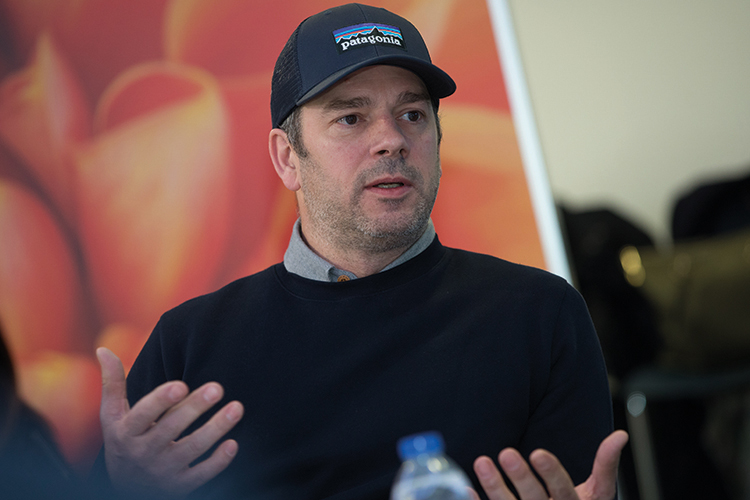 Paul Hewitt
Paul Hewitt
Managing director Generation Press
 Peter Jolly
Peter Jolly
UK&I country manager HP Indigo and HP Web Press
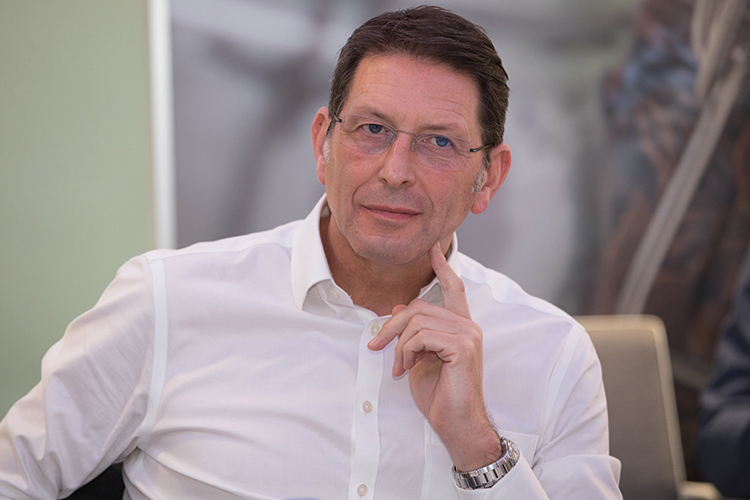 Mike Malpas
Mike Malpas
Managing director Hampton Printing
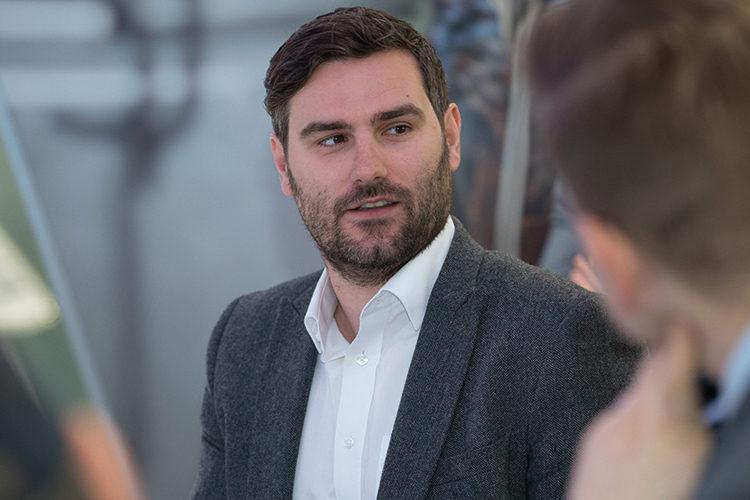 Paul Manning
Paul Manning
Managing director Rapidity
 David May
David May
Managing director Empress Litho
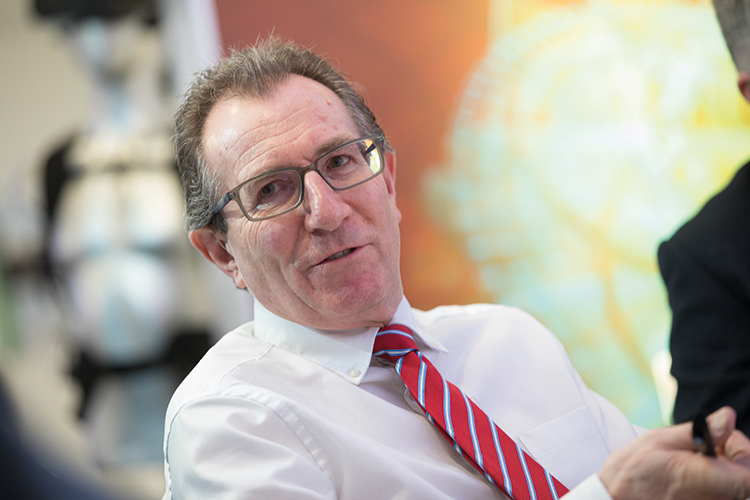 Martin Ruda
Martin Ruda
Managing director The TALL Group
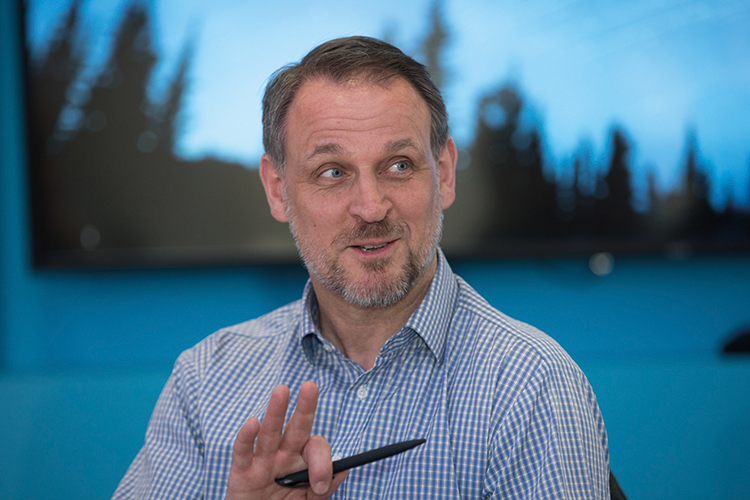 Fenton Smith
Fenton Smith
Managing director Boss Print










